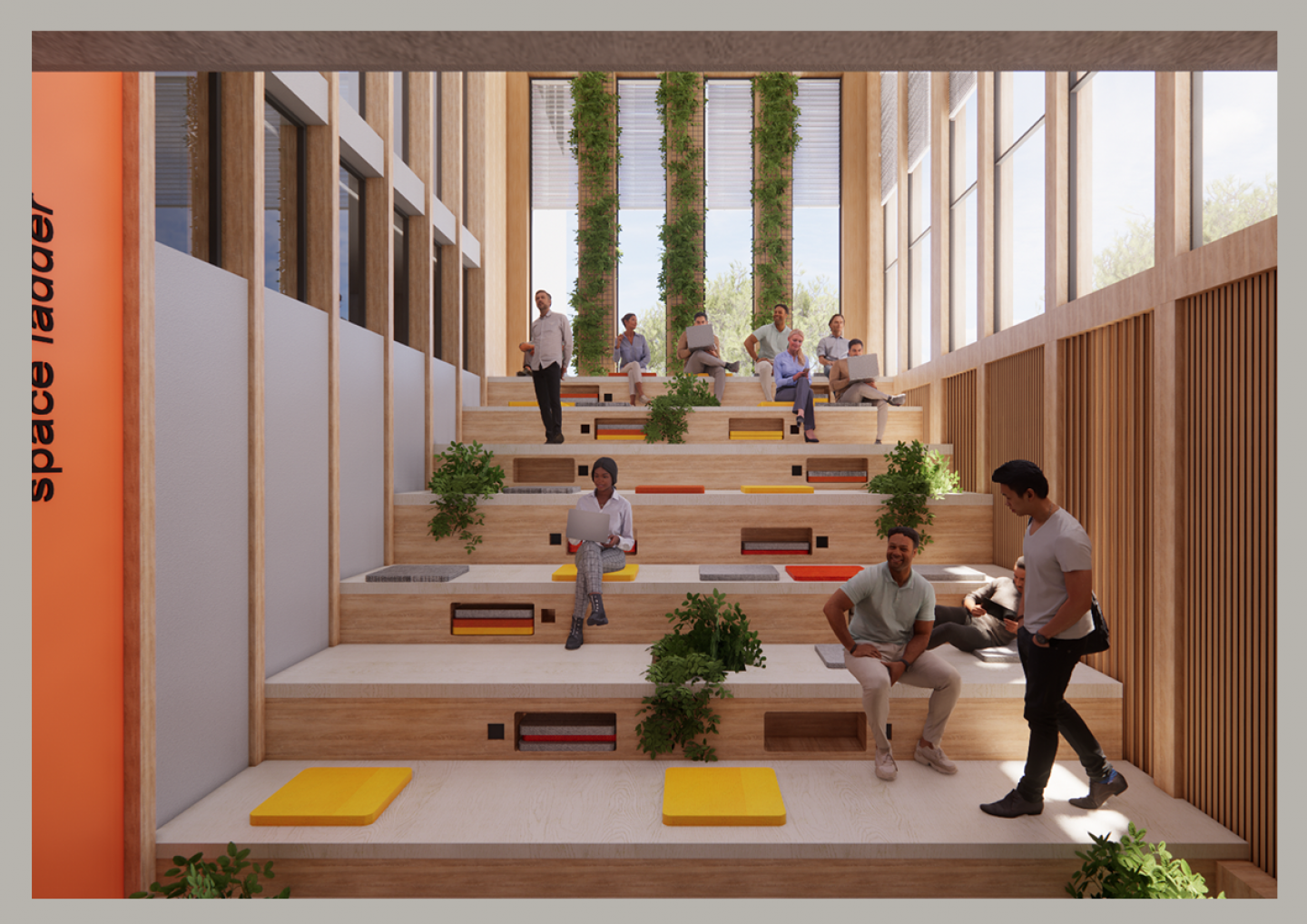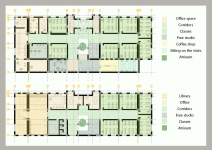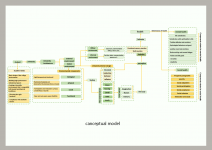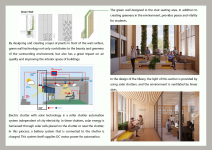Today, educational environments must not only fulfill their functional and pedagogical roles but also promote the mental, social, and physical well-being of students. Particularly in architecture and art universities, where creativity, innovation, and critical thinking are at the core, the design of educational spaces should serve as a source of inspiration and motivation. A well-designed educational environment can significantly enhance the quality of learning and contribute to students’ psychological and physical health.
In architectural design, particularly within the context of an architecture and art university, attention must be given to environmental factors such as light, temperature, color, and social space, as these elements can directly impact students' well-being. A thoughtfully designed space can foster a sense of comfort, encourage creativity, reduce stress, and promote both mental and physical health. By addressing these environmental factors, architecture can create supportive spaces that improve students’ overall quality of life.
Design Patterns for Enhancing Student Health:
Learning Streets:
Hallways and corridors can be transformed into multifunctional spaces for social interaction, group activities, and displaying student work. The central area of this “learning street” is designed with natural light and greenery, providing a common space that fosters community interaction, reduces stress, and enhances a sense of belonging among students.
Flexible and Movable Furniture:
The use of movable and adjustable furniture allows students to adapt the space according to their needs. This flexibility not only improves physical comfort but also encourages collaboration and social interaction, making the environment more engaging and supportive of student well-being.
Quiet Corners:
Quiet spaces are designed to offer students a retreat from the noise and stress of academic life. These areas provide a serene environment for focused work and individual study. The combination of green hues and natural wood materials in these spaces reduces stress and creates a warm, inviting atmosphere that enhances mental clarity and concentration.
Staircases as Learning Spaces:
Staircases, often overlooked, are increasingly recognized as valuable learning and social spaces. With the right design, stairs can become flexible areas for both individual study and group interaction. These spaces foster participation, encourage spontaneous learning, and promote critical thinking among students.
Open Studios for Creativity:
Open studio spaces encourage free and creative expression, allowing students to engage in individual and collaborative work. The inclusion of natural light in these spaces boosts mental performance, improves mood, and reduces the anxiety often associated with intensive academic projects.
Incorporating Nature into the Learning Environment:
Green spaces and the presence of trees around educational buildings help bring vitality and freshness to the environment. The integration of nature not only enhances environmental quality but also promotes student well-being by reducing stress and fostering a stronger sense of community and belonging.
Cafeteria and Social Spaces:
Cafeterias and social areas, strategically located within the campus, serve as informal spaces for students to relax and interact. These spaces play a crucial role in fostering social connections, reducing feelings of isolation, and enhancing overall student satisfaction during breaks from academic work.
2024
Project Name: Interior Design of an Architecture and Art University: Enhancing Student Health through the Positive Impact of the Environment on the Body and Mind
Location: Mashhad, Iran.
Design Objective:
Create a dynamic, creative, and healthy learning environment.
Foster student engagement, collaboration, and well-being through design.
Incorporate natural elements and flexible spaces to promote mental and physical health.
The interior design of architecture and art universities must go beyond functional and aesthetic considerations. These spaces should be designed to make students feel secure, comfortable, and motivated. Environmental factors in the design of these spaces play a critical role in enhancing students' physical and mental health. Thoughtful architectural designs not only contribute to the quality of education but also improve students' overall well-being, creating a healthier, more productive academic experience.
Student: fahime tafakori (Master student of Interior Architecture, Ferdows Institute of Higher Education, Mashhad, Iran)
Supervisor: Dr Maryam Mojtabavi (Assistant Professor, Department of Architecture, Ferdows Institute of Higher Education, Mashhad, Iran)
Favorited 10 times





















